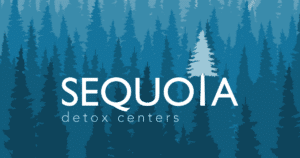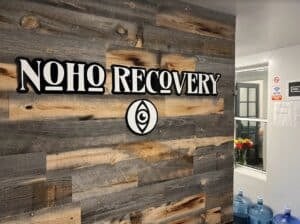Weed Is Stronger Now Than Ever Before
The Growing Popularity Of Weed
Marijuana (Weed) is the world’s most popular drug behind alcohol. For years activists and lobbyists in the US have pushed for the legalization of the plant. In 2012 the movement finally gained traction once Colorado approved Cannabis for adult recreational use. Since then, Marijuana consumption has become widespread. According to recent polls, more than 35 million people in the US are regular users of the drug. As states continue legalizing Cannabis, its numbers of consumers are growing, and its strains are becoming stronger.
Online Marijuana Addiction Counseling

Get professional help from an addiction and mental health counselor from BetterHelp by phone, video, or live-chat.
Take the Quiz. Get Matched. Begin Therapy.

Online therapy can help you with long term addiction support. Connect with a therapist from Talkspace anytime, anywhere.
Get matched with a therapist now.
Paid Advertising. We may receive advertising fees if you follow links to promoted online therapy websites.
Stronger Strains
Weed naturally creates over 100 compounds called cannabinoids. Whether it is a Sativa or Indica strain (the two main types of Cannabis plants), tetrahydrocannabinol (THC) and cannabidiol (CBD) are its most popular components. These cannabinoids produce Marijuana’s signature sensations of relaxation and euphoria. Over the years, the rate of these active compounds has risen. In 1994, variations of the plant contained about 4% of THC. Today, these amounts have spiked. According to a study published by the National Library of Medicine, the drug’s potency has tripled. The quantity of THC found in weed has soared from 4% to 12% in only a few years. There are even certain strains like sinsemilla (seedless female hemp plant) with a 15% to 25% concentration rate.
Concentrates And Extracts
Marijuana’s growing popularity is leading to the development of more potent products and new methods of consumption. Traditionally the plant was grown and usually smoked or baked. Now there are dozens of ways of extracting and using Cannabis to harvest its Psychoactive compounds or terpenes (aromatic oils). Modern science has discovered efficient methods for isolating larger amounts of resin (the sticky substance produced by the plant’s trichomes, or exterior growths that protect it from outside danger). These new products fall under 2 categories; extracts and concentrates.
Extracts
Extracts are Cannabis products made using solvents (like butane) to extract resin chemically. The physical properties of extracts vary based on the type of solvent used.
Examples of extracts include:
- Butane Hash Oil (Live Resin, Shatter, Terp sauce, Sap, Snap’ n Pull, Sugar)
- CO2 Oil
- Distillate
- Propane Hash Oil (Budder)
- Hexane Hash Oil (Similar to Shatter)
Concentrates
Concentrates are created by using a mechanical method to isolate resin and no solvents.
Examples of concentrates include:
- Dry Sift Hash
- Hashish
- Rosin
Extracts and concentrates are more potent than a traditional Cannabis flower because of their larger volumes of resin. According to the National Institute on Drug Abuse, resins (the isolated active compounds of weed) have 3 to 5 times more THC than a Marijuana plant.
Check if my insurance covers rehab
Addiction Center is not affiliated with any insurance.
The Health Risks Of Stronger Weed
Because of advanced knowledge and new technology, today’s Cannabis products are isolating higher amounts of psychoactive compounds and according to a study published by the U.S. National Library of Medicine, the stronger a Cannabis product is, the more likely a person is to develop an addiction. Roughly 1 in 10 adults who use Marijuana become addicted. A research paper presented by Missouri State Medical Association claims THC is the component that causes addiction. Therefore, the bigger the amounts of THC in a Cannabis product, the greater the possibility of dependence and eventual addiction.
Higher concentrates of THC, according to the National Institutes of Health, may lead to physical dependence, psychosis, and anxiety, particularly in young users. Thus, another major health concern is the increased risk of teen dependency. Since higher THC amounts in products increase the likelihood of addiction, those underage run a greater risk of developing health issues. Over the past few years, there have been cases of “cannabinoid hyperemesis syndrome,” referred to by healthcare workers as “scromiting”—screaming and vomiting—among young people using highly concentrated Marijuana products in states like Colorado. Marijuana use among teens can lead to improper development. Imaging tests show that long-term use among teenagers results in fewer connections impaired cognitive functioning within the brain. The underdeveloped brain activity has been linked to slower learning as well as reduced levels of alertness and memory. Some studies have even discovered that underage weed consumption may lead to lower IQ points in young adulthood.
Looking for a place to start?
Join the thousands of people that have called a treatment provider for rehab information.
Free and confidential
Available 24/7
Access to professional treatment
Marijuana Use Disorder And Addiction
Marijuana use disorder affects roughly 30% of its users. It is often associated with other substance use disorders, behavioral problems, and disabilities. According to a new analysis conducted by the National Institute on Alcohol Abuse and Alcoholism, in 2016, about 6 million people experienced Marijuana use disorder. The study also discovered that about 6.3% of people met the diagnostic criteria at some point in their lives.
Signs of addiction include:
- Low motivation
- Weight gain
- Paranoia
- Red eyes
- Enhanced appetite
- Impaired coordination
- Slow reaction time
- Dry mouth
- Dizziness
- Memory impairment
- Anxiety
- Impaired judgment
- Distorted perception
- Fatigue
Marijuana use disorder is 4 to 7 times more likely to develop in individuals who begin using the drug before 18. With the dramatic surge of THC and normalization of weed in America, experts believe addiction rates among teens will spike. As of now, 1 in 6 people who use Marijuana before adulthood will develop a dependence, but that number may soon change. Already physicians are noticing a rise in Marijuana-related hospitalizations.

Break free from addiction.
You have options. Talk about them with a treatment provider today.
Finding Treatment For Marijuana Addiction
Unfortunately, Marijuana use disorder goes mostly untreated. The public idea that Marijuana use is harmless and the rise in the drug’s potency is shifting the risks associated with its use. Much like alcohol, there are dangers correlated to long-term Marijuana use, contrary to popular belief. Conversely, weed’s long-term effects on the body are not yet fully understood. It is urgent to identify and implement effective treatment plans for individuals battling the disorder, but it is equally important to increase education among youth about the associated dangers and risks.
If you or a loved one are developing a Marijuana use disorder or addiction, there is help available. By seeking help through treatment, individuals can learn to cope and let go of their dependency. Contact a treatment provider today.
Overcome Marijuana Addiction

Get professional help from an addiction and mental health counselor from BetterHelp by phone, video, or live-chat.
Take the Quiz. Get Matched. Begin Therapy.

Online therapy can help you with long term addiction support. Connect with a therapist from Talkspace anytime, anywhere.
Get matched with a therapist now.

Begin making positive changes with Online-Therapy.com. Quality online therapy, from the comfort of home.
Answer a few questions to get started.
Paid Advertising. We may receive advertising fees if you follow links to promoted online therapy websites.
Published:
Author
Suzette Gomez

-
Suzette Gomez earned her Bachelor of Science from the University of Central Florida. Her desire to help others led her to a Pre-medical track with a focus on psychological and social development. After graduation, she pursued her passion for writing and began working as a Digital Content Writer at Recovery Worldwide LLC. With her background in medicine, Suzette uses both science and the arts to serve the public through her writing.
- More from Suzette Gomez
Reviewed by Certified Addiction Professional:
David Hampton

A survivor of addiction himself, David Hampton is a Certified Professional Recovery Coach (CPRC) and a member of the National Association of Alcohol and Drug Abuse Counselors (NAADAC).
- More from David Hampton
Sources


Recovery Starts Today
Call Now For Addiction Support



Newport Academy – Teen Rehab Center
Port Townsend , WA


Sequoia Detox Centers
Spokane Valley , WA



Moonlight Mountain Recovery – Nampa
Nampa , ID

Bayside Marin Treatment Center
San Rafael , CA

Newport Institute for Young Adults
Sunol , CA

The Camp Recovery Center
Scotts Valley , CA

Moonlight Mountain Recovery
Pocatello , ID




Hollywood Hills Recovery
Los Angelos , CA